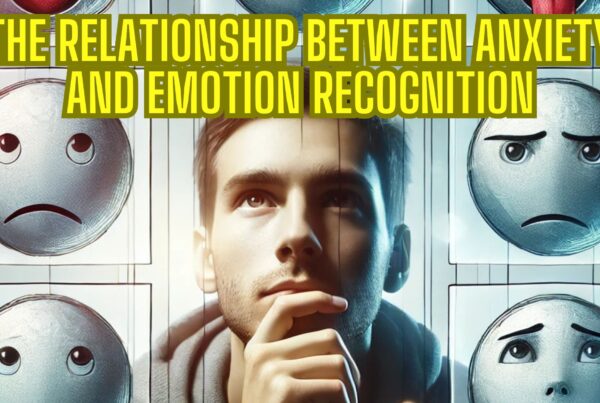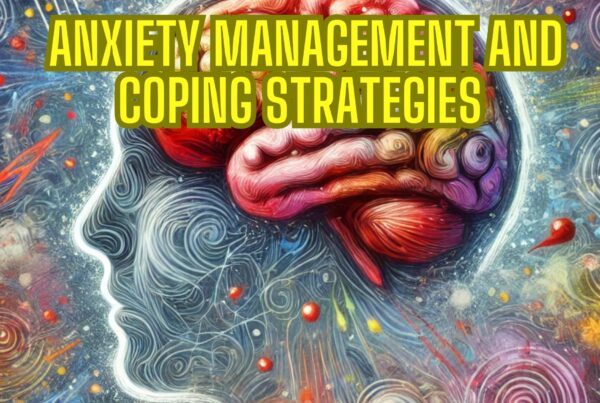Six Negative Mindsets That Trigger Anxiety (And How to Overcome Them)
There is no shortage of things nowadays to help create a sense on of anxiety. The uncertainty surrounding health, finances, and social issues has heightened anxiety levels for many people. Even those who are not typically prone to anxiety might find themselves overwhelmed by endless streams of bad news and misinformation. While we can’t completely eliminate anxiety, we can learn to manage it better by avoiding specific negative thought patterns that exacerbate our worries. Understanding these mindsets can empower you to break free from the anxiety loop and lead a more peaceful, mindful life. In this blog, we’ll be exploring six negative mindsets that trigger anxiety, along with ideas on how you can overcome them.
1. Hypervigilance and the Trap of Constant “What Ifs”
When you struggle with anxiety, your brain is constantly in overdrive, scanning for potential threats. You live in a state of hypervigilance, always thinking of the worst-case scenario. This excessive worry is often based on unlikely possibilities, leading you to focus on problems that don’t exist in the present moment.
The real danger here is that hypervigilance strengthens anxiety pathways in the brain, making it more likely for your mind to spiral into worry mode over trivial or irrelevant things. This might cause you to notice minor details, such as a stranger’s frown or a small bug on the sidewalk, as potential signs of danger. As a result, you become less present in your daily life, missing out on the positives around you.
How to Redirect Your Focus
To counteract hypervigilance, make a conscious effort to focus on positive things in your environment. This can be as simple as noticing the beauty in a sunrise, the playful energy of a pet, or the laughter of a child. Practicing mindfulness helps you stay grounded in the present, allowing you to quiet the noise of future-oriented worries. If your mind starts to spiral, gently redirect your attention to something calming, such as deep breathing or focusing on your five senses.
Note, download your FREE Mini-Mindfulness Meditation by simply clicking here.
2. Misinterpreting Ambiguous Situations as Threatening
When anxiety clouds your judgment, it’s easy to see every ambiguous situation as inherently dangerous. Even the smallest unknown can feel like an impending disaster. This mindset turns uncertain situations, such as waiting for medical results or receiving an unexpected letter, into sources of immense stress. Without concrete information, your mind fills in the blanks with the most negative outcomes.
For example, you may assume the worst when waiting for feedback on a work project or fear the results of a health check-up, even if the likelihood of bad news is slim.
Shift Your Perspective
Challenge yourself to consider multiple interpretations of ambiguous events, rather than immediately jumping to the worst conclusion. When you broaden your perspective, you allow space for neutral or positive possibilities. If you find it difficult to resist negative thoughts, practice delaying judgment until more information becomes available. During this time, distracting yourself with hobbies or connecting with friends can prevent you from dwelling on negative assumptions.
3. Overestimating the Likelihood of Negative Outcomes
A common trait among those with anxiety is overestimating the probability of bad things happening. This cognitive distortion makes it seem as though unlikely negative events are far more likely than they are. You may spend an excessive amount of time preparing for improbable disasters, which leaves you mentally and physically drained.
For instance, you might insist on a highly restrictive diet out of fear of developing health issues, even when there’s no indication that you’re at risk. Or perhaps you’re afraid to be home alone at night, even though you live in a safe neighborhood.
Ground Yourself in Reality
Instead of letting anxiety dictate your actions, rely on facts and statistics to inform your decisions. Consider the actual probability of negative outcomes based on past experiences and objective data. When you ground your thinking in reality, it becomes easier to recognize that most fears are overblown. Let evidence, not anxiety, guide your choices.
4. Catastrophising Minor Setbacks
Catastrophising is a mental habit where you blow minor setbacks out of proportion, interpreting them as major crises. When you catastrophise, even a small inconvenience or challenge feels like a monumental failure. For example, a temporary dip in the stock market might make you panic about losing your savings, or a single missed deadline could make you fear losing your job.
Catastrophising not only worsens your anxiety but also prevents you from seeing the resources and strengths you already possess to handle life’s challenges.
Build Resilience Through Self-Reflection
When you catch yourself catastrophising, ask yourself: “Is this situation truly catastrophic, or is it something I can handle?” Reflect on your past experiences and how you’ve successfully navigated challenges. Consider the supportive people in your life and the resources available to you. Focusing on your resilience rather than worst-case scenarios helps you keep things in perspective and lowers your anxiety.
5. Ignoring Safety Signals
People with anxiety often ignore safety signals—signs that a situation is less dangerous than it initially seems. This may stem from past traumas or negative experiences that lead you to overgeneralise danger in your current life. You might not recognise that the present situation is far safer than past experiences.
For example, if you had a bad car accident years ago, you may still fear getting into a car, even when the driver is skilled and cautious. Or perhaps you experienced rejection in past relationships and now distrust your current, trustworthy partner.
Learn to Identify Safety Signals
To overcome this mindset, consciously look for signs that indicate safety in your current situation. For instance, notice that your partner listens to you without judgement, or that your coworker values your input during meetings. If past experiences are influencing your fear, remind yourself of the ways the current situation differs from the past. By recognising these signals, you begin to trust the present more and reduce your overall anxiety.
6. Avoiding Situations That Trigger Anxiety
Avoidance is a common coping mechanism for those with anxiety, but it’s also one of the most damaging. When you avoid anxiety-provoking situations, you experience immediate relief, but this only strengthens your fear over time. Avoidance prevents you from learning that the feared outcome is unlikely or manageable, which means your anxiety remains unchecked.
For example, you may avoid public speaking due to fear of embarrassment, or refuse to confront a difficult conversation because you fear rejection. This pattern of avoidance limits your ability to grow and achieve your goals.
Face Your Fears Gradually
The antidote to avoidance is exposure. While it might feel uncomfortable at first, facing your fears in small, manageable steps helps desensitise you to the anxiety-inducing situation. Start by confronting smaller fears, such as speaking up in a supportive environment, and gradually work your way up to more challenging scenarios. Over time, you’ll develop confidence in your ability to handle anxiety and reduce its power over your life.
Recognising That It’s Just a Thought
Anxiety often arises from negative thought patterns that distort reality and amplify fears. By identifying and challenging these six common mindsets—hypervigilance, interpreting ambiguous situations as threatening, overestimating negative outcomes, catastrophising, ignoring safety signals, and avoiding difficult situations—you can begin to regain control of your mental well-being. Developing awareness and practicing new strategies will help you build resilience and reduce the grip that anxiety has on your life. Remember, the key to overcoming anxiety is not avoiding it but learning to manage and confront it with courage and mindfulness.
Further Information
- American Psychological Association: Anxiety Disorders
- National Institute of Mental Health: Coping with Anxiety
- Mayo Clinic: Generalized Anxiety Disorder
Release Hypnosis Melbourne Hypnotherapy
Since 2015, Lawrence Akers has been working under the name Release Hypnosis offering Hypnotherapy and ACT based work to the people of Melbourne or an online service. Based on St Kilda Rd, Release Hypnosis is an easy and convenient location to get to and accessible by the ANZAC station train and tram stop. Release Hypnosis can help with a wide range of presenting issues, and I offer a free 30 minute no obligation discovery call for those who are unsure if hypnotherapy is the right way forward for them.
Book Your FREE 30 Minute Consultation With Release Hypnosis NOW!
You may also like to read:
Exploring Content-Free Hypnotherapy
The Journey to Becoming a Better Hypnotic Subject
Best Hypnotherapy Resources 2023: Release Hypnosis Top Blogs
What Is The Success Rate of Hypnosis?
Release Hypnosis Melbourne Hypnotherapy is accessible for people in: Abbotsford, Armadale, Albert Park, Balwyn, Bentleigh, Black Rock, Box Hill, Brighton, Brunswick, Bulleen, Bundoora, Camberwell, Canterbury, Carnegie, Caulfield, Chadstone, Cheltenham, Clayton, Coburg, Collingwood, Deer Park, Doncaster, Elsternwick, Eltham, Elwood, Epping, Essendon, Fairfield, Fitzroy, Footscray, Glen Iris, Glen Waverley, Glenhuntly, Greensborough, Hampton, Hawthorn, Heidelberg, Highet, Ivanhoe, Kew, Kooyong, Lalor, Laverton, Lower, Plenty, Macleod, Malvern, Middle Park, Moonee Ponds, Melbourne, Moorabbin, Mount Waverley, Murrumbeena, Northcote, Oakleigh, Ormond, Parkville, Pascoe Vale, Port Melbourne, Prahran, Preston, Richmond, Rosana, Sandringham, South Yarra, South Melbourne, Spotswood, St Albans, St Kilda, Surrey Hills, Templestowe, Thornbury, Toorak, Tullamarine, Williamstown, Yarraville, North Melbourne, Windsor, East Melbourne, Melbourne, Melbourne CBD, Melbourne 3004








